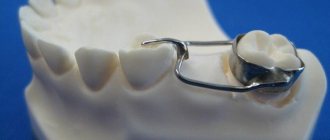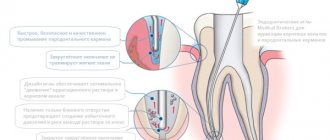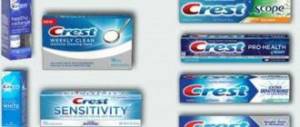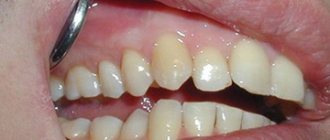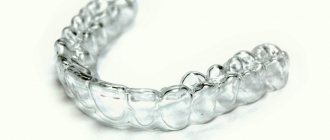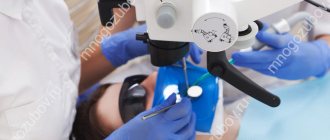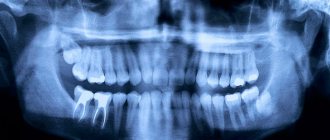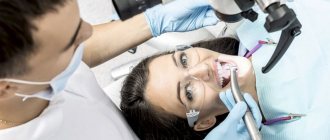The innovative ROOTT implant system is the optimal solution for any patient who is indicated for dental implantation. The system includes a set of solutions developed based on years of experience of Open Dental Community (ODC) implantologists and scientists, as well as practical research on the results of proven dental implant protocols. All implants are made from high-quality biocompatible titanium alloy.
Over the years, information has been collected to create a unified system of clinical cases, which identifies the main problems of each standardized case and options for solving them. Thus, based on collective experience, it was possible to create a unified system of optimal solutions for clinical cases (that is, which designs, installation methods, features of implant coating and which orthopedic design will be most effective for each specific situation). The ROOTT dental implant system was developed with the goal of combining all implantation options in one line of implants, so that each doctor has the opportunity to select the most effective individual treatment for the patient within one system.
General overview
ProRoot MTA is a mineralized trioxide aggregate, crushed to the state of a fine hydrophilic powder.
In dentistry, this material is used as a protective cement during endodontic root canal treatment of teeth.
The peculiarity of the mass is its uniform solubility and hardening when interacting with liquid.
During the dissolution process, the powder first takes on the consistency of a homogeneous gel, which, when subsequently applied to the working area, hardens, creating a mechanical barrier that prevents damage and destruction of the walls of the root canals.
Material for production
For the manufacture of ROOTT dental implants, titanium is used, or more precisely, a titanium alloy with aluminum and vanadium. This material is cheaper than pure titanium, and the aluminum and vanadium in the composition create a certain risk that the healing process will slow down a little - after all, these elements can be toxic and allergenic. However, in practice, rejections for this reason occur extremely rarely.
An alloy of titanium with aluminum and vanadium - ELI (Ti-6Al-4V), is a very durable substance. It is 3-3.5 times stronger than pure titanium, which makes it possible to make thinner but stronger implants from it.
Operating principle and properties
The principle of action of the drug ProRut is the mechanical coating of the walls of the root canal, which leads to its restoration and prevents further destruction.
Thus, ProRoot is capable of sealing holes between periodontal tissues and the tooth cavity if it is necessary to treat dental perforations.
During the apexification procedure, the cementing material is able to isolate the apical part of the root, sealing the canal.
During the procedure for eliminating root resorption, ProRoot covers defects on the root surface , and during retrograde filling, it prevents moisture and bacteria from penetrating under the filling.
Additionally, ProRoot can be used to provide a protective pulp cap to restore tissue vitality.
Thus, the action of ProRut is multifunctional and can be used in various ways during treatment.
Let's find out together why a tooth hurts after root canal cleaning, and what can be done.
Come here to find out what you can do if a filling falls out of a tooth.
At this address https://www.vash-dentist.ru/lechenie/zubyi/plombyi/iz-chego-skladyivayutsya-tsenyi.html we will calculate how much it costs to change a filling in a tooth.
Review of ROOTT dental implants (Root) – models, features, comparison with other brands, prices
Switzerland is home to several brands of dental implants. Some of them are widely available throughout the world, others are supplied to a small number of countries. The latter includes the ROOTT brand, whose implants are installed exclusively in a limited number of clinics. But in our country these are generally isolated dentistry offices. Next, we’ll tell you in more detail what Ruth implants are, as well as their features, pros and cons, and compare the company’s products with other brands.
Advantages and disadvantages
The mass has a number of advantages that distinguish it from other cements:
- The material is sealed. This property makes it possible to exclude the proliferation of pathogenic bacteria and the penetration of liquids into the root canal, which is the key to successful restoration of dental root tissue.
Research shows that ProRut's hygiene indicators are much better than its direct analogues. - It practically does not cause rejection among patients, since only high-quality and safe elements are included in the composition.
- Able to harden even in humid conditions , which is especially important in dentistry, where drying the working cavity is not always possible.
The disadvantages of the material include a short working period after mixing (only 5 minutes) and the possibility of lack of hardening during installation.
However, the second drawback is offset by the fact that the material can be easily removed from the cavity without harm to the patient, and the procedure can be repeated again.
Shape, carving and coating
The shape of implantation systems is similar to a thin cone, which brings them closer to the shape of a natural tooth root. There are two types of carving. One - with sharp wide blades for installing the basal implant deep into the bone, for securing in the cortical plate. The second is compression thread; during the installation of the implant, the bone tissue is compacted around the threads and the body of the implant.
Read on the topic: what types of dental implants exist – and what they should be like to last as long as possible.
As for the coating of Rutt implants, it is similar to the well-known SLA. That is, after milling and cleaning, the implant is sandblasted and acid etched. These processes create a rough texture and micropores on the surface, which will become a “framework” for the growth of bone tissue.
Indications and contraindications
The paste can be used to solve the following clinical problems:
- Sealing may be indicated when performing a resection of the upper part of the root.
- Protection. If the pulp is viable, applying ProRoot material to it can speed up the resolution of the inflammatory process and maintain the functionality of the pulp chamber without additional intervention.
- Elimination of perforations of dental cavities during endodontic treatment.
- Apexification.
The product has no contraindications, except in cases of individual intolerance to the drug.
Kneading rules
Kneading does not cause any particular difficulties for a specialist, however, it requires a certain care and accuracy when performing.
To prepare the paste, you need to perform the following manipulations:
- Open the package of powder and pour it into a mixing container.
- Open the bottle of mixing liquid from the ProRoot kit and squeeze it out next to the powder mass.
- Using a mixing tool, carefully mix the liquid fraction with the powder for one minute.
- The resulting composition should have a uniform consistency and all its particles should be moistened.
- If necessary, add liquid from an additional ampoule or 2 drops of distilled water to the resulting mass.
It is recommended to stir the composition gradually and thoroughly, ensuring the uniform distribution of the liquid in the mass.
Then the cement will be pliable to work with and will harden evenly after application.
Where to go for installation of ROOTT implants in Moscow
The ROOTT implant system is developed and constantly updated by TRATE AG in close cooperation with members of the Open Dental Society. ROOTT's philosophy is to create an ideal artificial tooth that seamlessly osseointegrates with existing biological structures. Osseointegration is the strong fusion of the implant with the bone. Lack of osseointegration can occur when soft tissue (gingiva) grows between the implant and the bone. The effectiveness of implant procedures performed using ROOTT implant systems is more than 98%.
A special feature of the Swiss manufacturer’s line are unique basal implants, which allow you to restore any number of teeth in the shortest possible time using an immediate loading protocol.
Specialists from clinics using this technology in Moscow will tell you more about the benefits of ROOTT implantation.
| Name | Clinic address | Service cost |
| ROOTT |
|
|
| Shandora | Moscow, Kolpachny lane, 6, building 4. |
|
| Dentistry Alpha Dent |
| Classic implantation ROOTT from 40,000 rubles. |
| Moscow, st. Upper fields, 35, building 4 |
| |
| Dentistry Doctor Lopatin |
| Classic implantation ROOTT from 39,000 rubles. |
An increasing number of dentists in Moscow prefer to work with TRATE AG implant systems. ROOTT basal implants are:
- Excellent protection against inflammation
- Adjustable abutment angle
- Maximum correct placement in the stock
- The ability to do without bone grafting even if there is a resolved alveolar ridge.
Leave a review
Features of application
Let's consider the main features of the product:
- The cementing mass is prepared in full compliance with the instructions in the instructions. Using a probe supplied with the powder, ProRoot is placed into the defect area and then compacted using special tools.
- Verification of adequacy of material placement using radiographs. If the position is incorrect, the material should be washed and reinstalled.
- After installing the mass into the prepared canals, a damp cotton swab is placed, after which the canal is sealed with a temporary filling for a period of 4 hours or until the next appointment.
- On the second visit, the dentist uses the rubber dam and examines the installed material, checking it for hardness. If the material has not hardened well, it should be washed out of the cavity and installation repeated.
In this case, the product remains in the root canals, like a layer of permanent filling, sealing them and protecting them from negative external influences.
The use of the product significantly increases the chances of restoring the problematic element of the jaw arch and extends the life of the filling mass.
Main characteristics of cement fillings, reviews from dentists and patients.
This publication contains all the most important information about the technique of unfilling tooth canals.
Here https://www.vash-dentist.ru/lechenie/zubyi/plombyi/obturatsiya-kornevyih-kanalov.html read about the indications for obturation of the root canals of teeth.
Types of “Ruth” models and their features
As already noted, Ruth implants are most often produced in one piece - one-piece. But there are also two-part (collapsible) ones - the abutment is placed on them separately. According to another classification, ROOTT systems can be basal, compression and classic root-shaped. The length of the implants varies between 0.6-2.6 mm, the diameter is 3.5-5.5 mm. According to the manufacturer, basal and compression systems can be used for implantation with immediate loading of the prosthesis. Next, let's look at the implant models and their characteristics in more detail.
Compressive implant line
ROOTT compression implants are thin structures that resemble a cone. They are used for fixation directly in the cancellous and basal parts of bone tissue. When installed, the bone is compacted around itself. In case of pronounced atrophy, they are not used (in this case, basal models are used, more about them below).
Compressive models have a gold-colored abutment and neck, a rough coating, and the prosthesis can be fixed to the abutment only with cement. Other design characteristics are presented below:
- Compressive: have high primary stability, are not used for installation in the area of the upper lateral teeth, the abutment of these implants has an adjustable angle of inclination,
- Compressive S: has a short neck, making it suitable for use with gingival thicknesses of less than 1 mm.
Compressive M compression systems differ in the type of abutment - a multiunit is used here, the prosthesis is attached to it with screws. The Compressive M and Compressive MP models have a pink abutment, while the Compressive MS has a golden abutment.
Basal implant line
Basal one-piece implants with wide and pointed threads are designed for installation in deep layers of the basal bone that are not susceptible to atrophy. The carving is not applied throughout the entire body of the structure, but only in the lower half. The abutments of these implants are only suitable for cemented fixation of the prosthesis from above. Ruth produces 2 models in this line - Basal and Basal SS. The Basal model has a smooth, polished finish. Such a surface serves as an obstacle to the attachment of microbes to it. The Basal SS features an SLA treatment on the bottom while the rest of the body has a polished gold finish.
The basal ruler is suitable for use in patients with periodontitis[1] and periodontal disease. When restoring a segment of teeth or a completely toothless jaw, a combination of basal and compression models is possible.
Line of Rootform implants
Rootform models are classic root-shaped two-piece implants with self-tapping threads and a rough surface. Can be used for implantation with immediate and delayed prosthetics. They are installed mainly in the cancellous part of the bone.
“The dentist persuaded me to put in a Rutt implant instead of the removed four. I thought, of course, that it would be cheaper, but Switzerland)) The operation seemed to go well, but the stitches had not been removed yet. True, I’m still missing a tooth; they’ll install a crown only in a few months, they haven’t said exactly when yet.”
Sergei, review from otzovik.com
Useful tips
The composition hardens slightly longer than other cements. This feature should be taken into account when carrying out work. Careful mixing of the powder makes the material more convenient to use.
It is important to follow the recommendations for the amount of liquid when mixing , because... its insufficient or excessive amount can affect the strength of the mixture after hardening, and, therefore, lead to a significant decrease in the quality of the procedure.
The prepared mass hardens within 3 hours after mixing, however, the working time is limited to only 5 minutes.
If a specialist needs a longer period of time to work , then the mixed material can be covered with sterile gauze soaked in distillate to prevent the evaporation of moisture from it.
Key Product Features
Almost all Ruth implants, with a few exceptions, have two key features. The first is that they are one-part, i.e. implant and aba for fixing the prosthesis) are combined into one. The second is that implants are mainly used for atrophy of the upper cancellous bone. They are placed in the deep basal layer, incl. using a dense cortical plate, without prior surgery to increase bone volume. All these properties could not be achieved if it were not for the peculiarities of the materials used and the methods of their processing. Let's look at them in more detail below.
Nuances of use
Despite the existence of general principles of technology for using the ProRut material, each individual clinical case requires a special approach to the procedure.
Let's consider the main nuances of work when performing various tasks.
Perforation restoration
When performing a perforation repair procedure, it is important to ensure that the installed material is positioned adequately and that it hardens after installation.
During treatment, several control images using x-rays may be required, as well as reinstallation of poorly “adhered” material.
A detailed description of the procedure for restoring perforation can be found in the article above.
Pulp capping
There are the following features of the pulp capping procedure:
- A light-curing material is applied on top of the applied ProRut material, which is illuminated in accordance with the technology proposed by the manufacturer.
- Dentin cavities are etched for 15 seconds using phosphoric acid. After pickling, everything is thoroughly washed.
- Then, everything is dried so that the dentin remains slightly damp, but not excessively. An adhesive is applied to the dental tissue and illuminated in accordance with the technology.
- The procedure ends with the application of a composite material.
After the procedure is completed, the patient is scheduled for another appointment, during which the vitality of the pulp is assessed.
Restoration of the root apex
Filling the apical part of the root is performed using the following technology:
- The specialist opens access. Then the cavity is prepared using an ultrasonic instrument.
- The surgical area is isolated with a rubber dam. The root canals are dried. If bleeding occurs, stop it with a sealant sponge.
- ProRoot is mixed and applied to the defect area using the supplied probe. After application, the material must be compacted.
- Excess cementing gel is removed from the root surface using a moistened gauze cloth.
- The adequacy of the placement of the material is confirmed by taking an x-ray.
Thus, the ProRoot installation procedure does not require additional special tools, and if errors occur in the installation, everything can be corrected without harm to the patient.
The composition remains at the apex of the root, playing the role of one of the components of a permanent filling, protecting the root from negative influences.
Root apexification
Root apexification is performed using a technology similar to the procedure for restoring perforation.
The procedure consists of placing calcium hydroxide into the apical part of the tooth and covering the root apex with ProRoot material.
As a result of this, cement-like tissue is formed on teeth with non-viable pulp and the root tissue is gradually restored.
In the video, watch the technique of mixing and sealing root canals with ProRoot paste.
Manufacturer information
The headquarters of the company, which owns the ROOTT brand (“Root” or “Rutt”), is located in Zurich, Switzerland. The production of Ruth system implants is located in the European Union, and the products are supplied to several European countries, India and Argentina. Despite the relative youth of the brand - it has been represented in our country since 2013, the company notes that it has established connections with suppliers of high-quality raw materials. It also uses modern equipment in the production of ROOTT implants, thanks to which they comply with international quality standards. In addition to implants, gum formers, abutments, and surgical kits are produced under the Ruth brand. Actually, everything you need for implantation.
Reviews
If you had a chance to try ProRoot material on yourself as a patient, or you are ready to share your thoughts about this product from the position of a specialist, leave your review in the comments to this article.
Personal experience from use gives the reader the opportunity to form a more complete opinion about the product than the information given by the manufacturer.
If you find an error, please select a piece of text and press Ctrl+Enter.
Tags filling fillings
Did you like the article? stay tuned
Previous article
Features of the course and treatment of chronic fibrous pulpitis
Next article
Subtleties of practical dental restoration using the GlassSpan system
Comparison with implants from other brands
If we consider the global market for implantation products and modern protocols for restoring teeth on implants, we cannot fail to note the Oneway Biomed brand from Ihde Dental AG (founded in the mid-twentieth century in Switzerland) and its Strategic Implant concept. About 40 years ago, this company, after long and hard work, created basal and compression implants in the form in which they are produced by other manufacturers under similar names. In fact, ROOTT implants are a copy or analogue of Oneway Biomed models. Only younger and less explored, as well as exclusive.
Interesting to know! By comparison, Oneway Biomed products are supplied to almost 50 countries, and more than 1 million implants are produced every year. The brand is represented very widely around the world and in our country. That is, the patient has a real opportunity to place such implants near his home, and then undergo examinations in comfort.
Reviews from dentists about ROOTT implants can be called realistic only after these systems “cross” the mark of 20-30 years of operation in a large number of patients. Moreover, the operation will be accompanied by regular and massive research - survival rates for 10-15 years, the number of peri-implantitis, rejections, etc. By the way, the leaders of the global implantation market - the Swiss Nobel Biocare and Straumann (known for more than 40 years), constantly conduct similar studies and openly publish their results. Just like the company Ihde Dental AG, which about 30 years ago developed basal implantation in its modern version.
